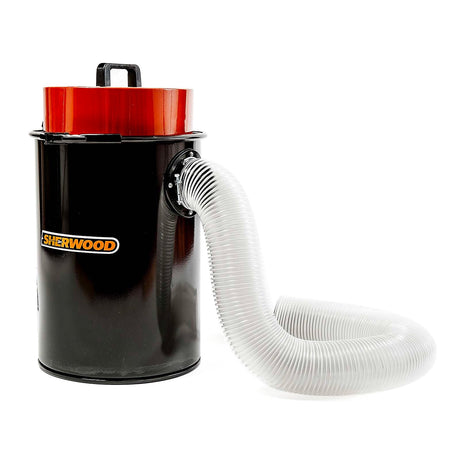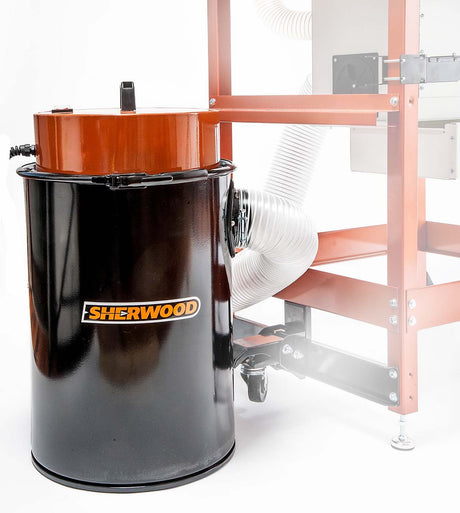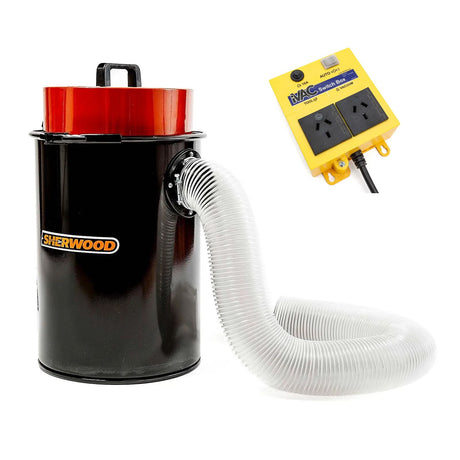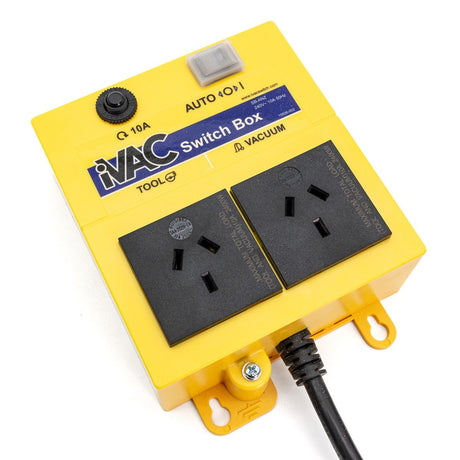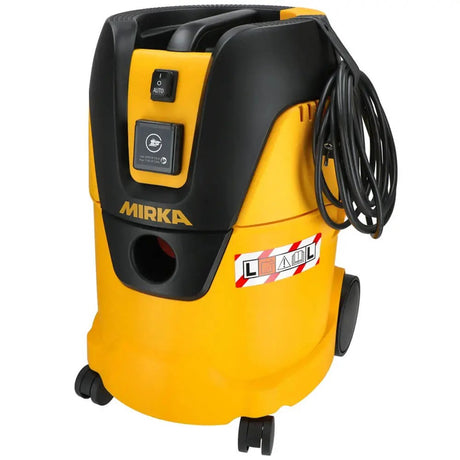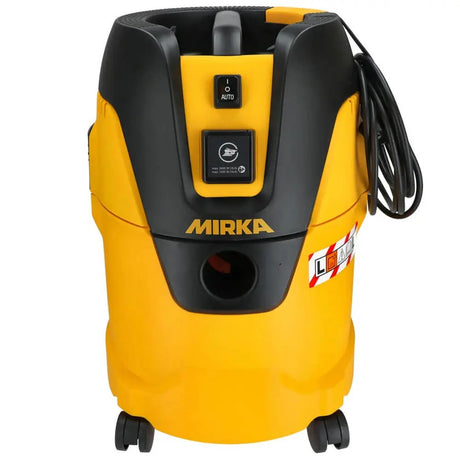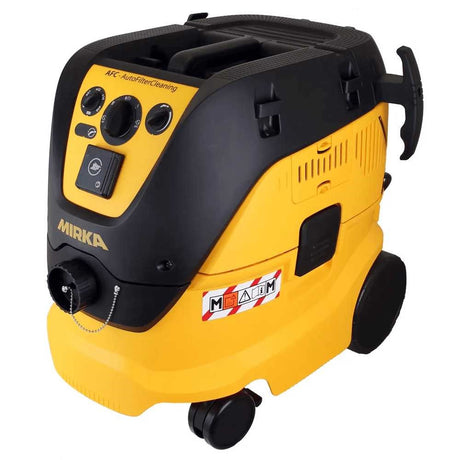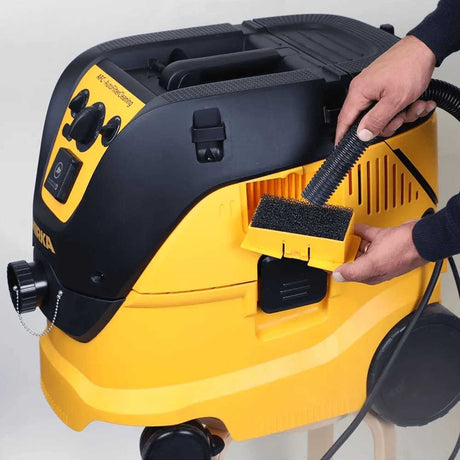Sherwood
Sherwood 1100W 1.5HP Compact Dust Extractor Portable 50L
$179.90$229.00Unit price /UnavailableLow stock (10+ units)Sherwood
Sherwood DC-50 with iVac Switchbox Automated Dust Collection Bundle
$331.00$388.90Unit price /UnavailableIn stockMirka
Mirka Dust Extractor 1230M AFC Vacuum M-Class
$1,655.00$1,839.00Unit price /UnavailableIn stockFestool
$799.00$975.00Unit price /UnavailableVery low stock (1 unit)Festool
Festool CTM 36L M Class Autoclean Dust Extractor
$1,849.00$1,999.00Unit price /UnavailableMirka
Mirka Dust Extractor 1200W 30L Automated
$1,205.00$1,339.00Unit price /UnavailableIn stockMirka
Mirka DEROS II & DEROS RS 600 Plus PRO Dust Extractor Bundle
$4,199.00$4,599.00Unit price /UnavailableVery low stock (5 units)Mirka
Mirka DEROS II Plus Dust Extractor Bundle
$2,549.00$2,805.00Unit price /UnavailableVery low stock (5 units)Festool
Festool CTM 26L M Class EI Dust Extractor
$1,625.00Unit price /UnavailableVery low stock (1 unit)Festool
Festool CTMC MIDI 15L M Class 18V Cordless Mobile Dust Extractor 8.0Ah Bluetooth Energy Set
$1,725.00Unit price /UnavailableVery low stock (1 unit)
Precision Dust Control with Vacuum Extractors for Woodworking
Vacuum extractors provide highly targeted dust collection, making them an essential tool in workshops where fine control and mobility are crucial. Unlike traditional dust collectors, vacuum extractors generate strong static pressure, allowing them to efficiently extract dust directly from handheld power tools, routers, sanders, and CNC machines. This makes them particularly effective in finishing work and bench-top applications where larger systems may fall short.
Many vacuum extractors feature HEPA or multi-stage filtration systems capable of capturing microscopic particles, ensuring clean air even during high-dust tasks like sanding MDF. Their compact and portable design allows them to be moved between workstations with ease, and automatic tool-triggered start/stop functionality in some improves convenience and reduces energy use. For tasks demanding close-range extraction or mobile use on-site, vacuum extractors offer unmatched versatility.
Vacuum extractors are ideal for keeping not just your lungs but also your tools and surfaces dust-free. Reduced airborne dust extends tool life, and maintains a cleaner finish on materials. Additionally, they often come with variable suction control, allowing users to tailor the extraction power based on the application, from gentle pull for lightweight sanding to high suction for drilling or routing.
To get the most from a vacuum extractor, it’s important to regularly empty the dust canister, clean or replace filters, and ensure hose connections remain airtight. Investing in high-quality extractors with robust filters and durable construction will ensure long-term performance. Whether for the workshop or the job site, vacuum extractors are a practical and powerful solution for serious dust control.
FAQs
What is a vacuum extractor used for in woodworking?
Vacuum extractors are designed for close-range dust collection, especially from handheld power tools. They're ideal for use with routers, sanders and other power tools where fine dust is generated at the source and needs immediate extraction.
How is a vacuum extractor different from a dust collector?
While dust collectors move large volumes of air at low pressure, vacuum extractors deliver high static pressure with lower volume, making them better suited for direct tool connection and fine dust collection in smaller or confined work areas.
Can vacuum extractors be used with HEPA filters?
Yes, many vacuum extractors are equipped with HEPA filtration, capable of capturing 99.97% of particles down to 0.3 microns. This is particularly useful when working with hazardous materials like MDF or during fine sanding tasks.
Are vacuum extractors suitable for use on job sites?
Absolutely. Their compact form, mobility, and robust suction make them ideal for portable use on construction or renovation sites where dust control is critical in tight or varied workspaces.
Do vacuum extractors have automatic start/stop features?
Many models include tool-activated start/stop functions. This allows the extractor to power on when a connected tool is used and switch off when the tool stops, improving convenience and energy efficiency.
What maintenance does a vacuum extractor require?
Routine maintenance includes emptying the collection bin, cleaning or replacing filters, and checking hoses for blockages or leaks. Keeping filters clean is especially important to maintain suction performance.
Can I use a vacuum extractor with all power tools?
Most modern power tools support dust extraction ports compatible with vacuum extractors. Adaptor kits are also available to connect tools without a standard port, making vacuum extractors highly versatile across tool types.
Is variable suction control important?
Yes, variable suction allows you to match the extraction power to the task. Lower suction can be used for delicate sanding, while maximum power is helpful for heavy-duty routing or cutting applications.
How does a vacuum extractor improve workshop safety?
By removing fine airborne dust at the source, vacuum extractors significantly reduce respiratory hazards and maintain clear visibility at the work surface. This promotes a safer, more efficient working environment.

